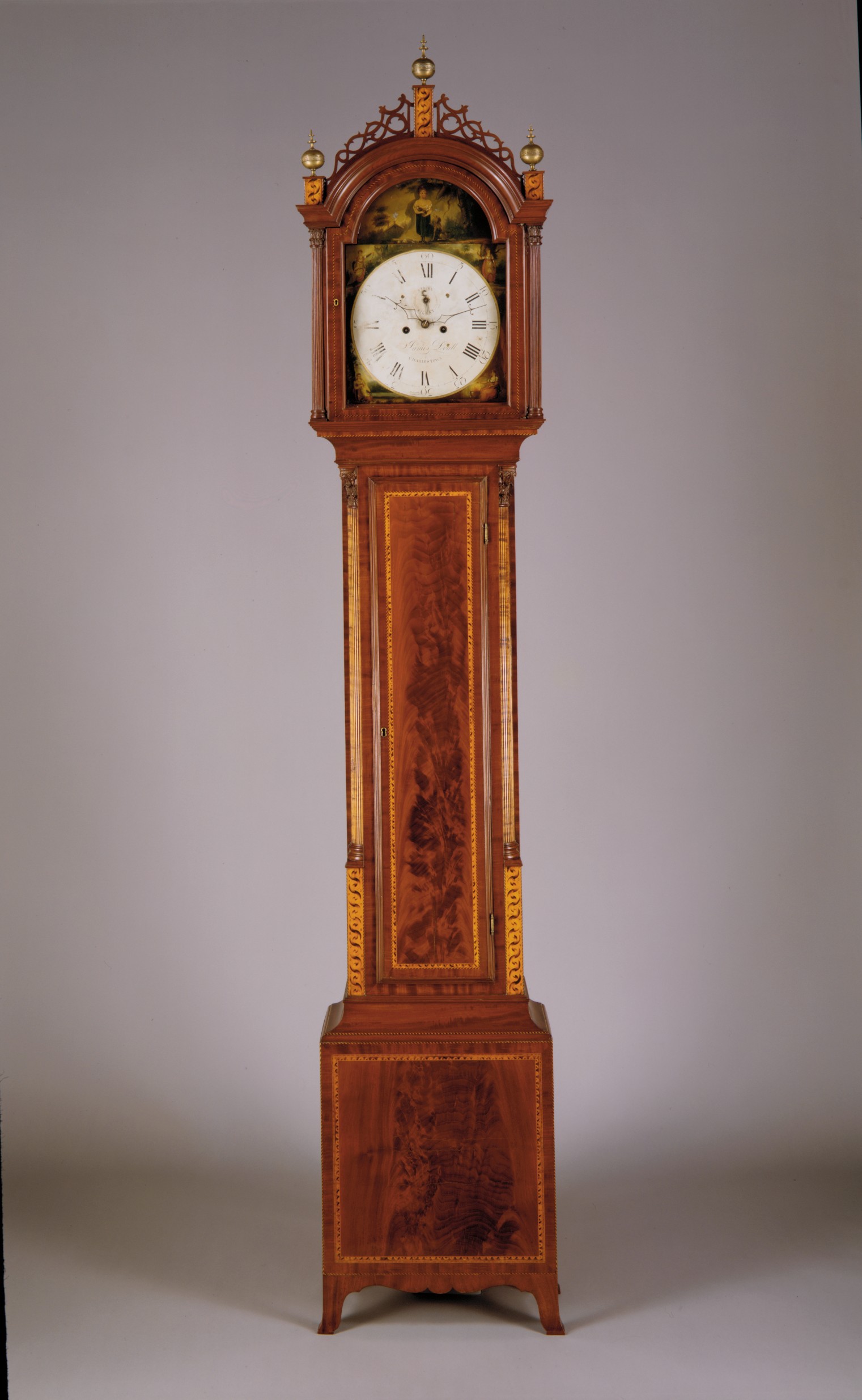Tall Clock
Over nine-feet-tall, this majestic clock is among the finest and most aesthetically significant examples produced in North America during the Federal period (1790–1825). The manufacture of such pieces was a joint venture between the clockmaker, the cabinetmaker whom he employed to furnish the case, and the patron. In this instance we are able to identify with precision only the man responsible for the works, James Doull of Charlestown, Massachusetts, whose name is painted on the appropriately oversized thirteen-inch dial. The brilliantly veneered and inlaid case, although unsigned, is quite likely by Thomas Seymour (1771–1848) of Boston, whose signature-style lunette inlays of shaded maple border the door and the lower part of the case; they are also used to face the plinths below the brass finials and the reeded and richly carved, engaged quarter columns of curled maple. The clock dial depicts charmingly naive versions of the personifications of the four seasons—standard motifs on imported English painted dials of the period—and a portrait in the tympanum of a young girl in an idealized landscape. These images may be by John Penniman (active 1806–28), an artist documented as having decorated dials for the renowned Willard family of clockmakers in nearby Roxbury and Grafton.
This image cannot be enlarged, viewed at full screen, or downloaded.
This artwork is meant to be viewed from right to left. Scroll left to view more.





